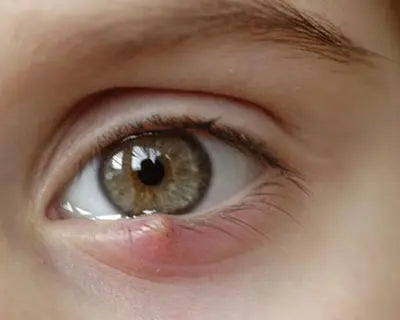Styes and chalazion are common eyelid conditions that can cause discomfort, swelling, and sometimes pain around the eye area. While they may appear similar at first glance, there are key differences between the two, as well as specific causes and treatment methods. Understanding these conditions can help individuals identify symptoms early and seek appropriate care, including the effective use of warm compresses.
What Are Styes and Chalazion?
A **stye**, also known as a hordeolum, is a red, painful lump near the edge of the eyelid that may look like a boil or a pimple. Styes are often caused by a bacterial infection in the eyelash follicle or an oil gland. They can occur on the inside or outside of the eyelid.

A **chalazion**, on the other hand, is a painless lump on the eyelid that develops when an oil gland becomes blocked. While initially less painful than a stye, a chalazion can grow to a size that affects vision and might become inflamed or tender over time.
Causes and Risk Factors
The primary cause of **styes** is an infection by Staphylococcus bacteria, which often reside harmlessly on the skin's surface but can cause infection if they enter the eyelid through a scratch or if the eyelid becomes irritated. Risk factors for styes include touching the eyes with unwashed hands, using outdated or contaminated eye makeup, and having a condition that increases the likelihood of bacterial infections, such as blepharitis or rosacea.
**Chalazion** develop when the meibomian glands (oil glands in the eyelid) become clogged due to thickened glandular secretions or other blockages. Factors that increase the risk of chalazia include having a history of chalazion or styes, conditions that alter the composition or flow of oil in the glands (like rosacea or blepharitis), and poor eyelid hygiene.
Symptoms
**Stye symptoms** include:
- A red, swollen lump on the eyelid
- Pain and tenderness in the affected area
- Eyelid swelling
- Tearing
**Chalazion symptoms** include:
- A lump on the eyelid that may grow over time
- Mild eyelid swelling and redness
- Increased tear production
- Rarely, blurred vision if the chalazion is large
Treatment Options
The treatment for both conditions often starts with **warm compresses**. Applying a warm compress to the eyelid for 10-15 minutes, four to five times a day, can help the stye or chalazion to drain naturally. The warmth helps to liquefy the blocked contents of the gland, promoting drainage and healing. The See Better MD heated eye mask is designed for this purpose.
For **styes**, gentle massage of the eyelid (following warm compress application) can aid in draining the infection. It's important to maintain eyelid hygiene by cleaning the area with mild soap and water and to avoid using makeup or wearing contact lenses until the stye resolves.
If a **chalazion** persists or affects vision, further treatments may include:
- Steroid injections to reduce swelling
- Antibiotic ointments if there's a secondary infection
- Surgical removal by an eye care professional in more severe cases
Prevention
To prevent styes and chalazia, practice good eyelid hygiene:
- Wash hands frequently and avoid touching the eyes with unwashed hands.
- Remove eye makeup before sleeping and replace makeup every 6 months to prevent bacterial growth.
- Clean eyelids with a gentle cleanser such as the Lid and Lash Cleanser if you're prone to blepharitis or oily skin.
- Consider using a warm compress daily with the heated eye mask if you have a history of eyelid issues.
Styes and chalazia are common eyelid problems that, while uncomfortable, are usually treatable with self-care measures like warm compresses. Understanding the causes, symptoms, and treatment options can help individuals manage these conditions effectively and prevent recurrences. If symptoms persist or worsen, consulting an eye care professional is recommended to avoid complications and ensure proper treatment.

